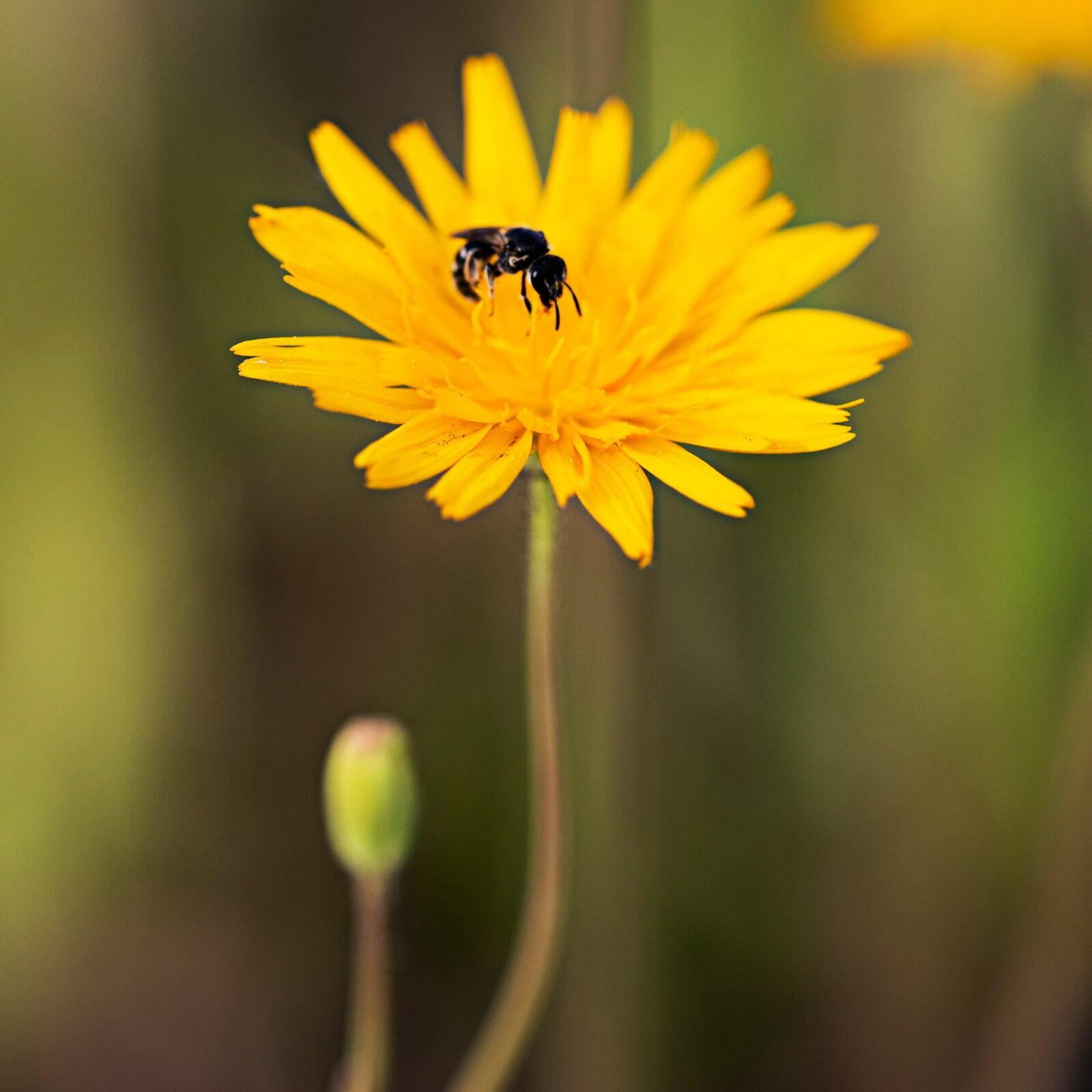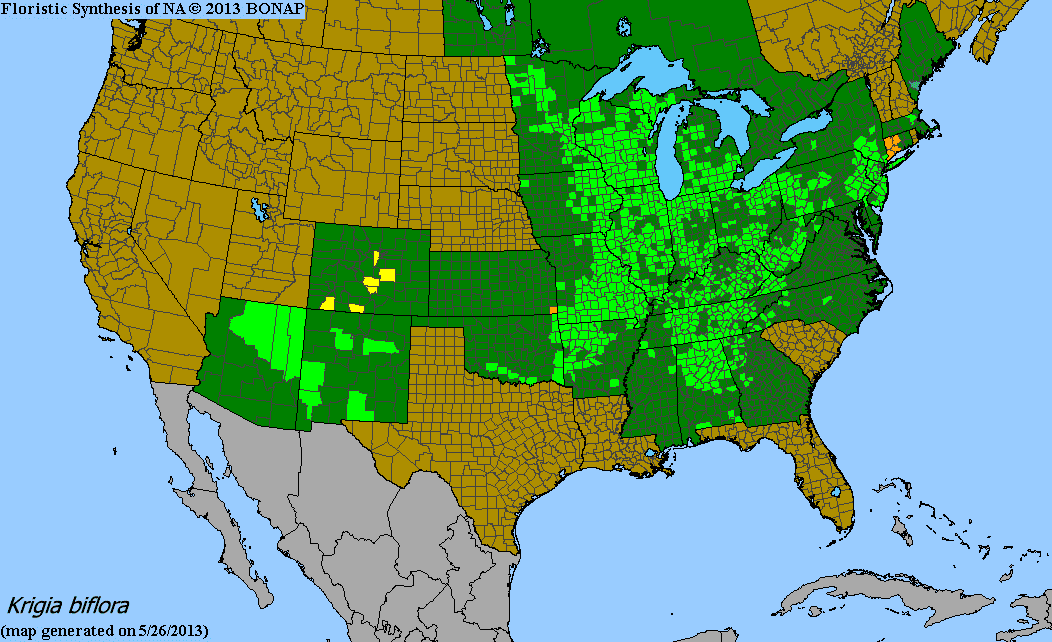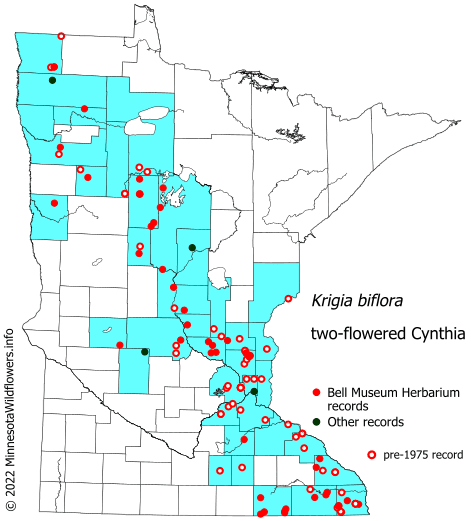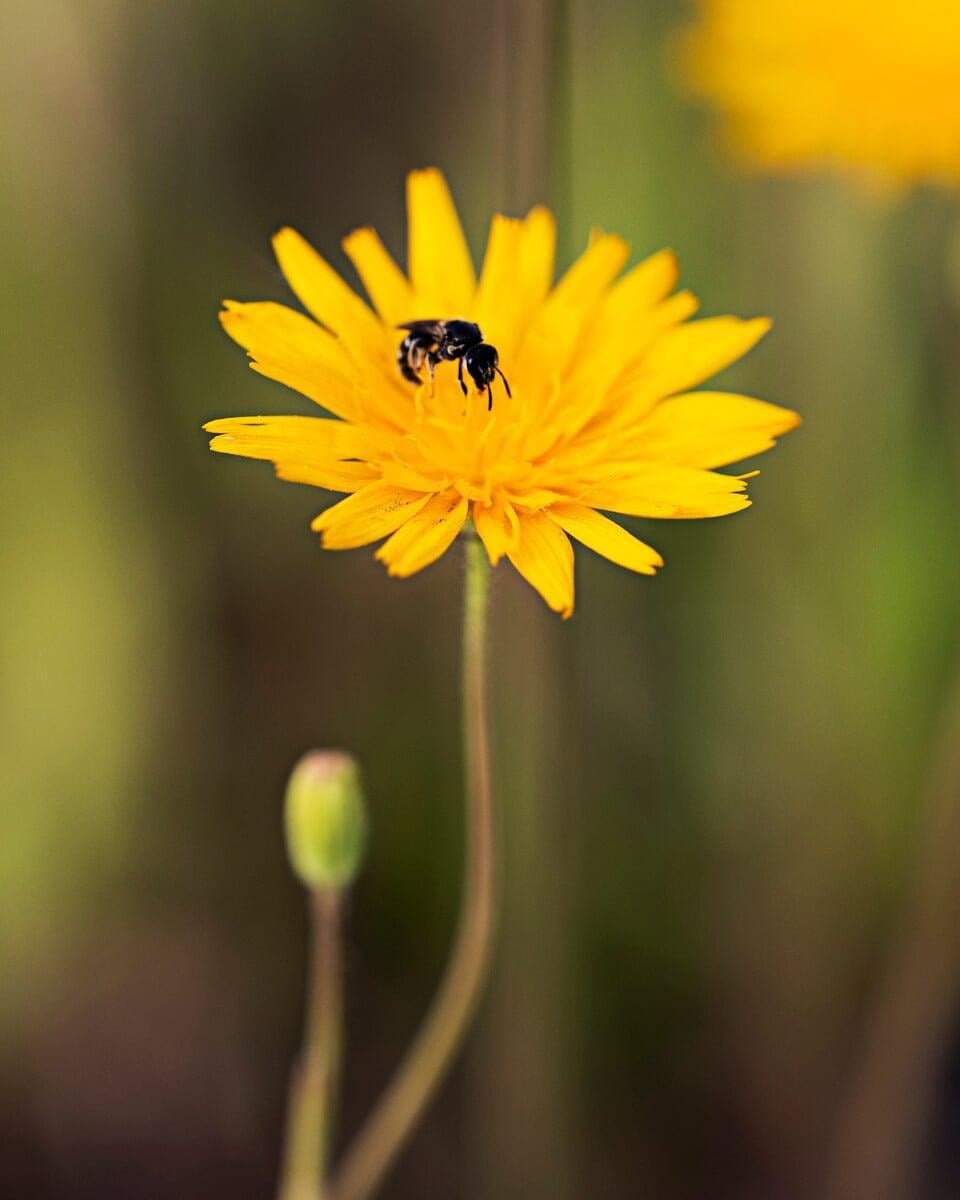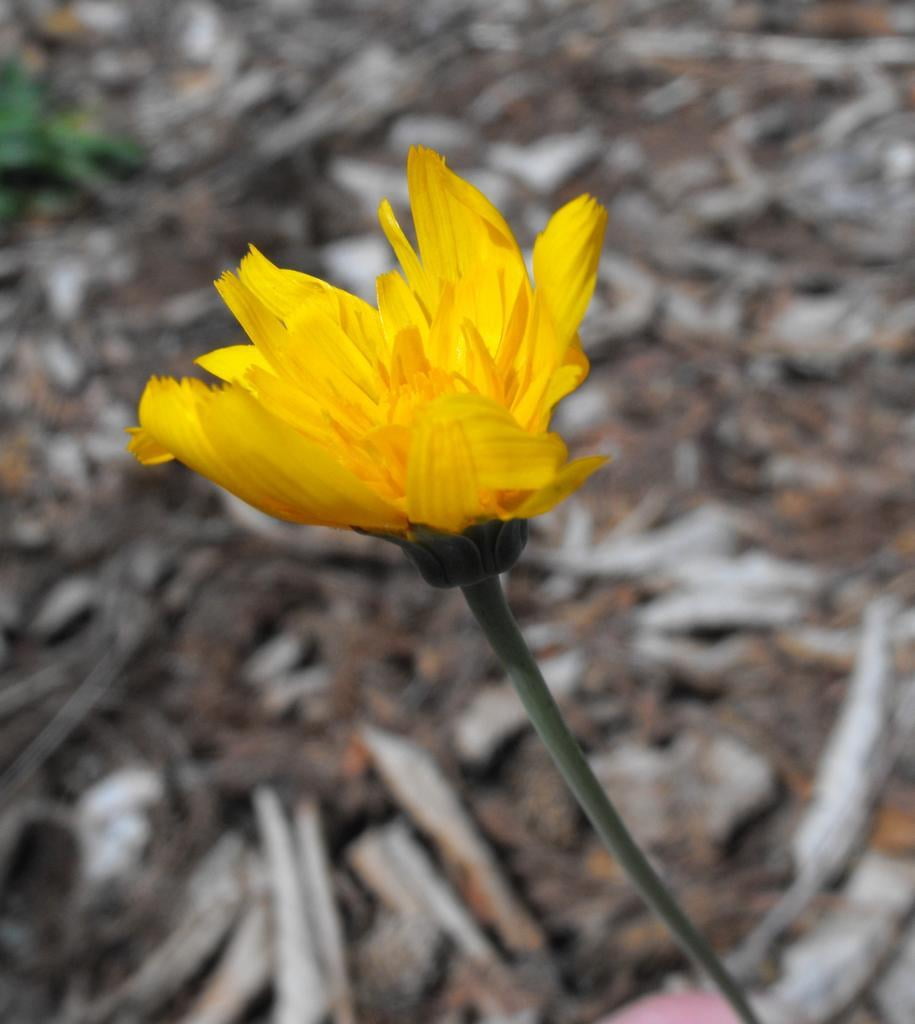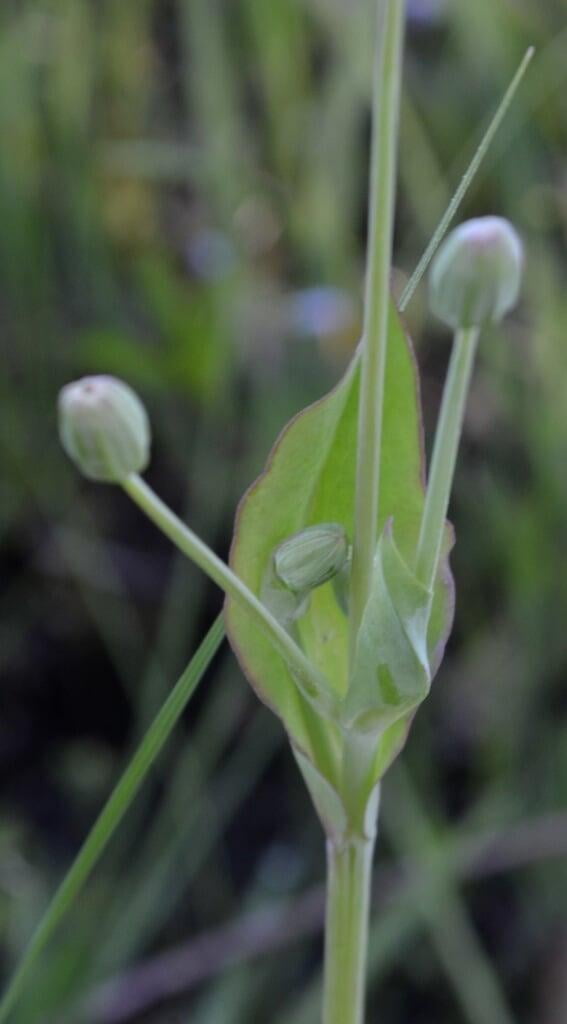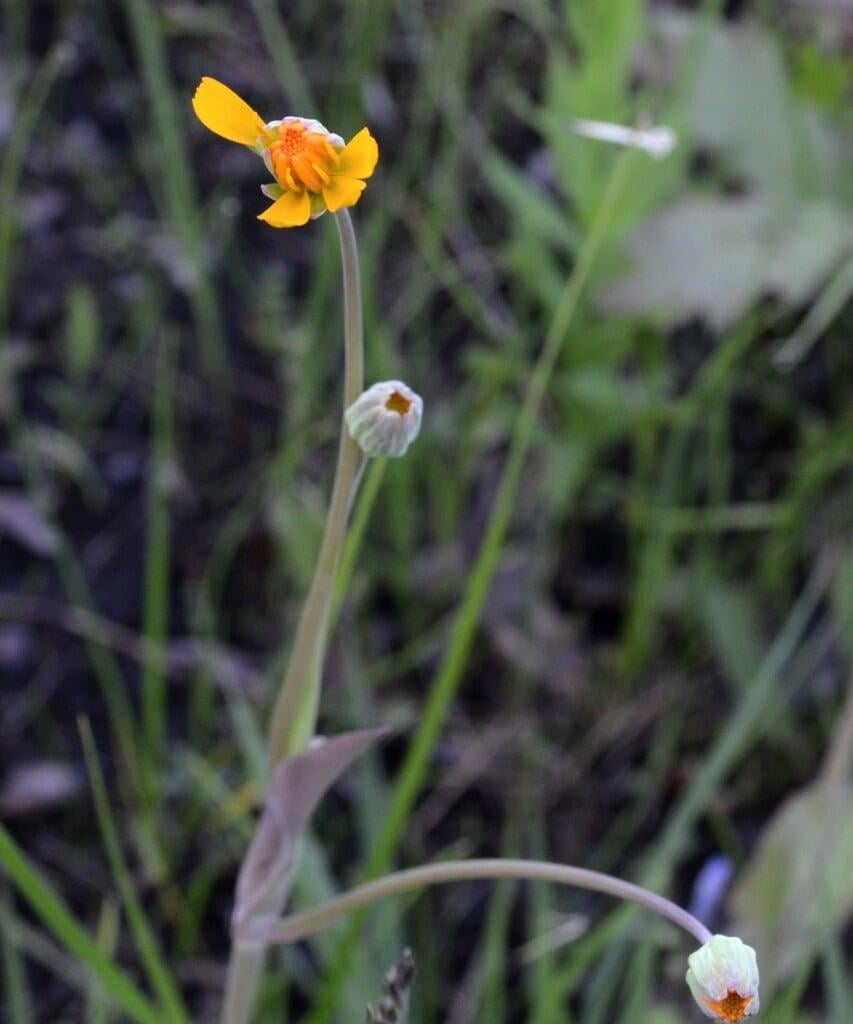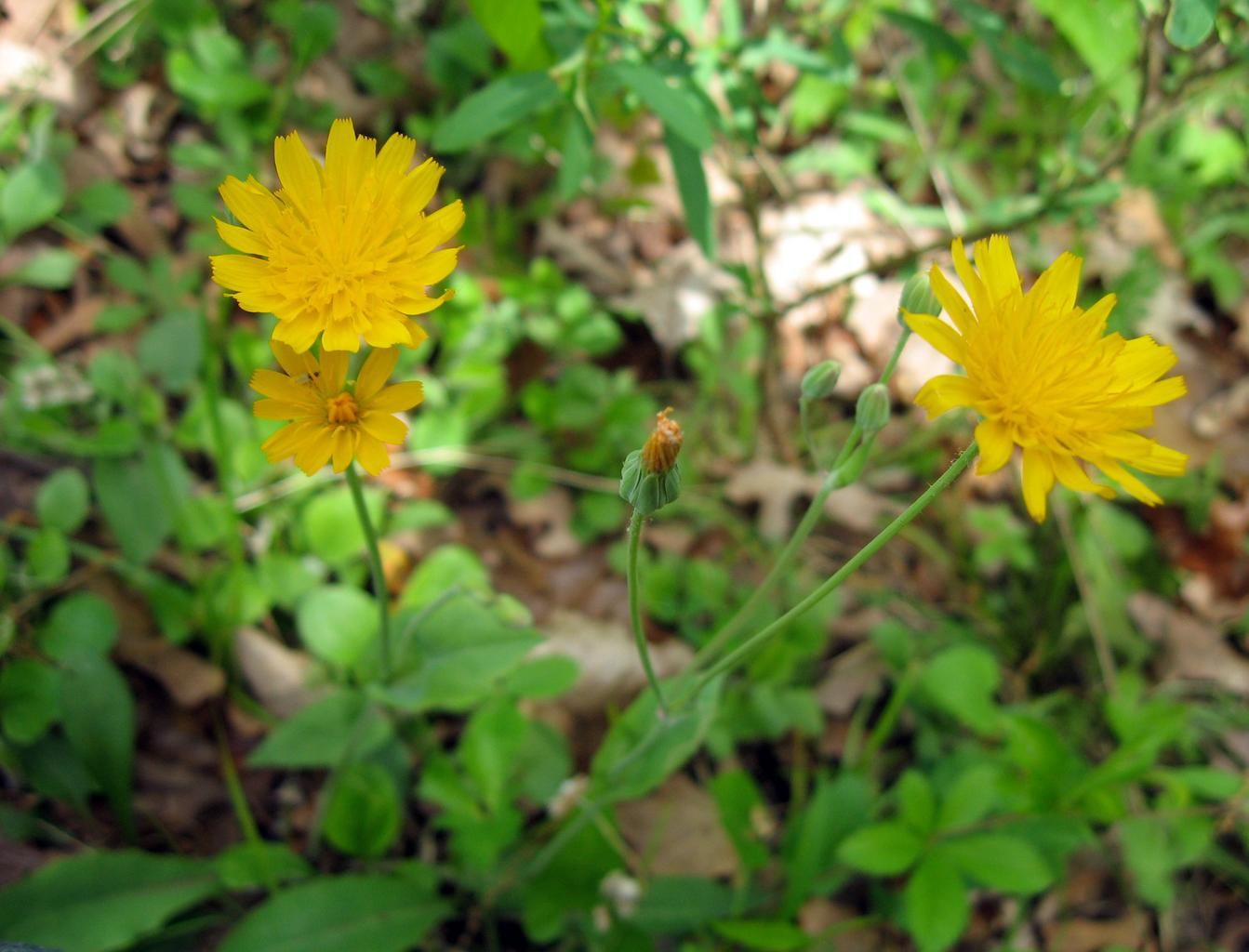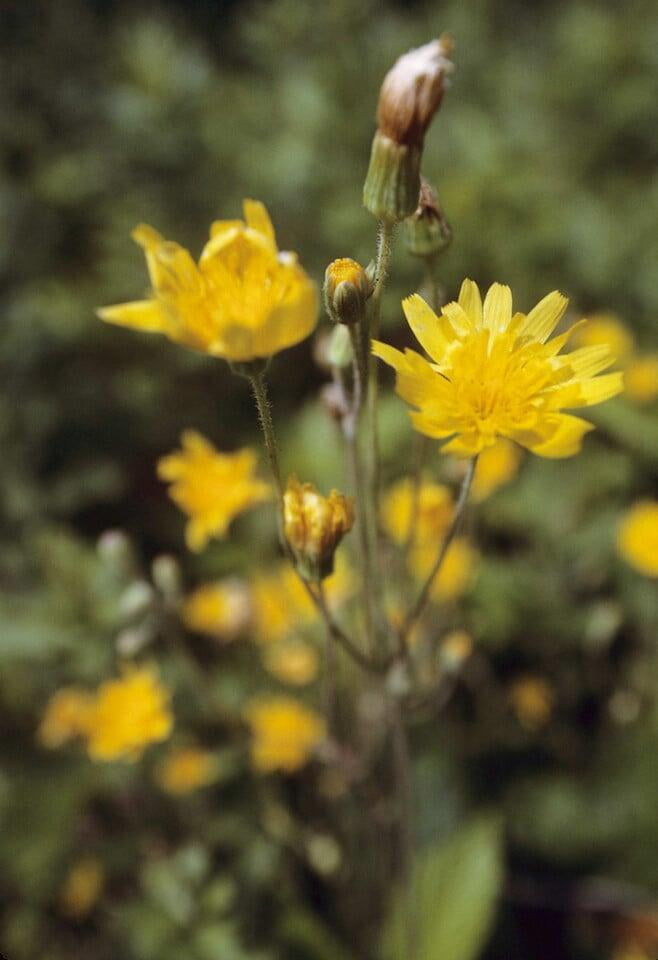Krigia biflora
Two-flowered cynthia Description:
Krigia biflora, commonly known as two-flowered dwarf dandelion, is a small, herbaceous perennial plant that is native to North America. It belongs to the family Asteraceae and typically grows to 8-30 inches in height. The plant has a basal rosette of leaves that are deeply lobed and hairy.
In late spring to early summer, the two-flowered dwarf dandelion produces one to several slender stems that bear small, yellow flowers with two petals. The blooms are typically less than an inch wide and have a resemblance to dandelion flowers, but with only two petals instead of the typical four. The flowers are followed by small, fluffy seed heads.
This plant prefers growing in well-drained soils and full to partial sun, making it a great choice for rock gardens, meadows, or other naturalistic plantings. It is also a popular choice for container gardens.
While Krigia biflora is not commonly used for medicinal purposes, it has been used by some indigenous people as an herbal remedy for digestive issues and coughs. However, it should be noted that it is not recommended to use this plant for medicinal purposes without proper consultation with a healthcare professional.
Native Range:
Two-flowered cynthia is found growing natively in many states across the United States. That said, it is concentrated in the Midwest and East coast. There are some native populations in the Southwest which include Arizona and New Mexico.
In Minnesota, Two-flowered cynthia is distributed from Northwest to Southeastern Minnesota. This area is generally thought of as a transitional zone between prairie and boreal forest.
Standard Plant Information:
Plant Height: 8" - 30" inches
Bloom Time: May - August
Preferred Habitat: Does well in part shade to full sun. Often found in prairies, open woodland.
Sowing:
For most homeowners, the best option is to scatter seed on the ground by hand broadcasting at a minimum of 16-64 pls ounces per acre. For even coverage, we recommend that you broadcast seed in perpendicular rows across the site to ensure even coverage.
You’ll want to broadcast any grass seed first, which will get raked into the soil lightly. Next, it is ideal to mulch the area lightly with either a clean (no seed) straw or preferably with our native Little Bluestem straw, sold at our retail garden centers. After a light mulching is complete, now it’s time to broadcast your native wildflower seeds, which should not be raked into the soil. A good rain or watering is sufficient to cover the seed.
Planting:
Simply dig a hole in the soil slightly larger than the plant’s roots. Ensure that the soil line of the plant is maintained during the transfer (i.e. the plant should be at the same level with the ground as it was in the pot). Pack any loose dirt back around the plant and make sure you water it well the same day to ensure it has the best chance of survival.

